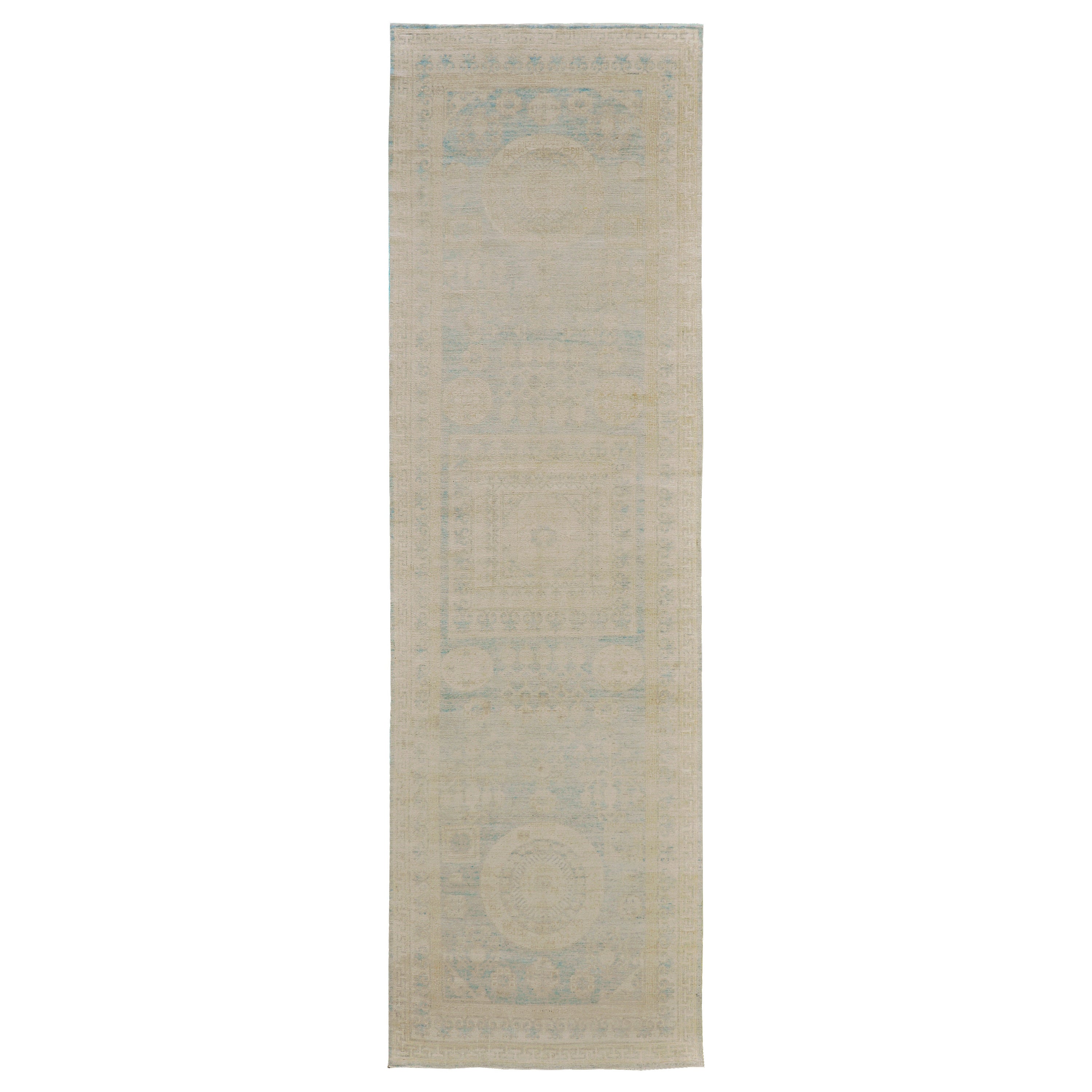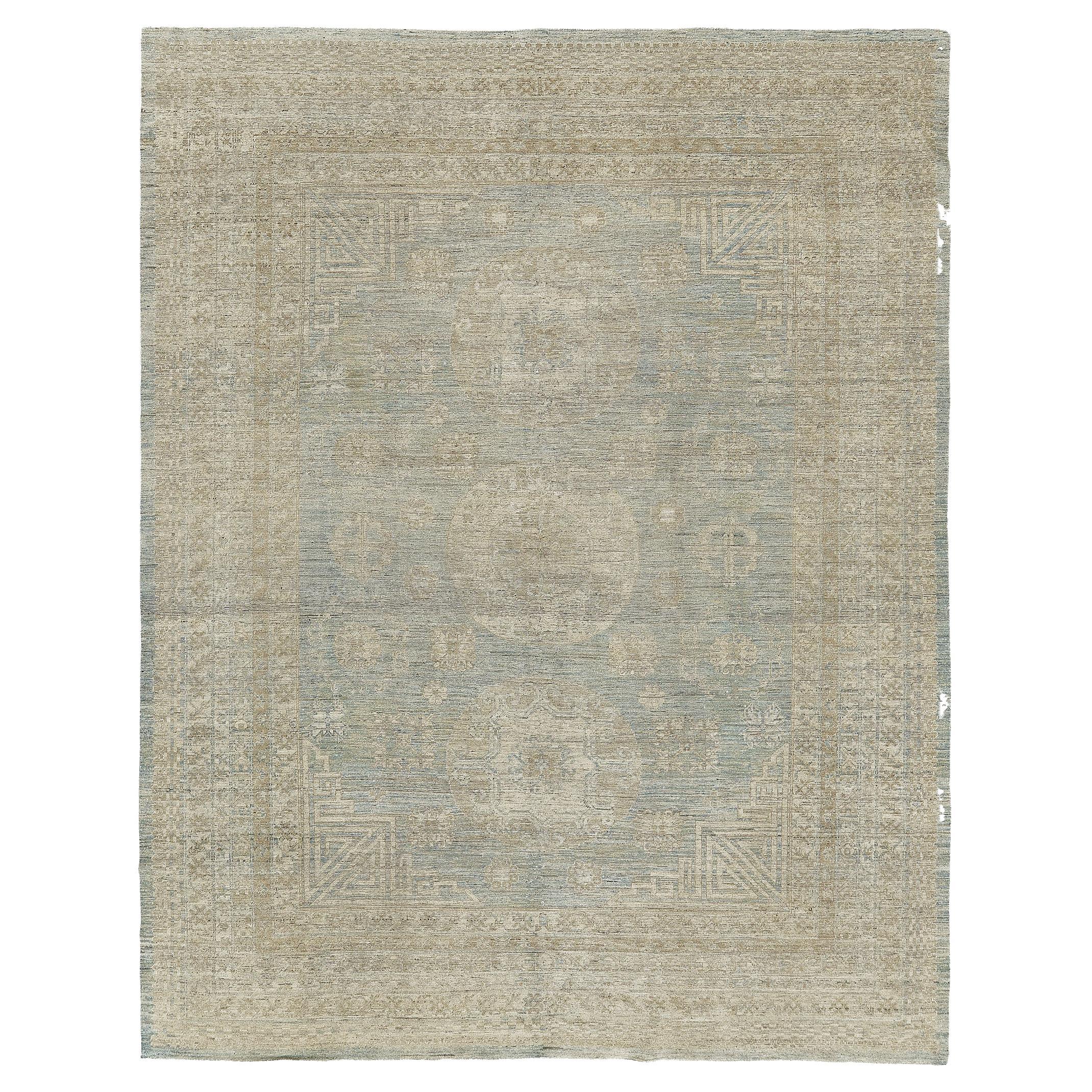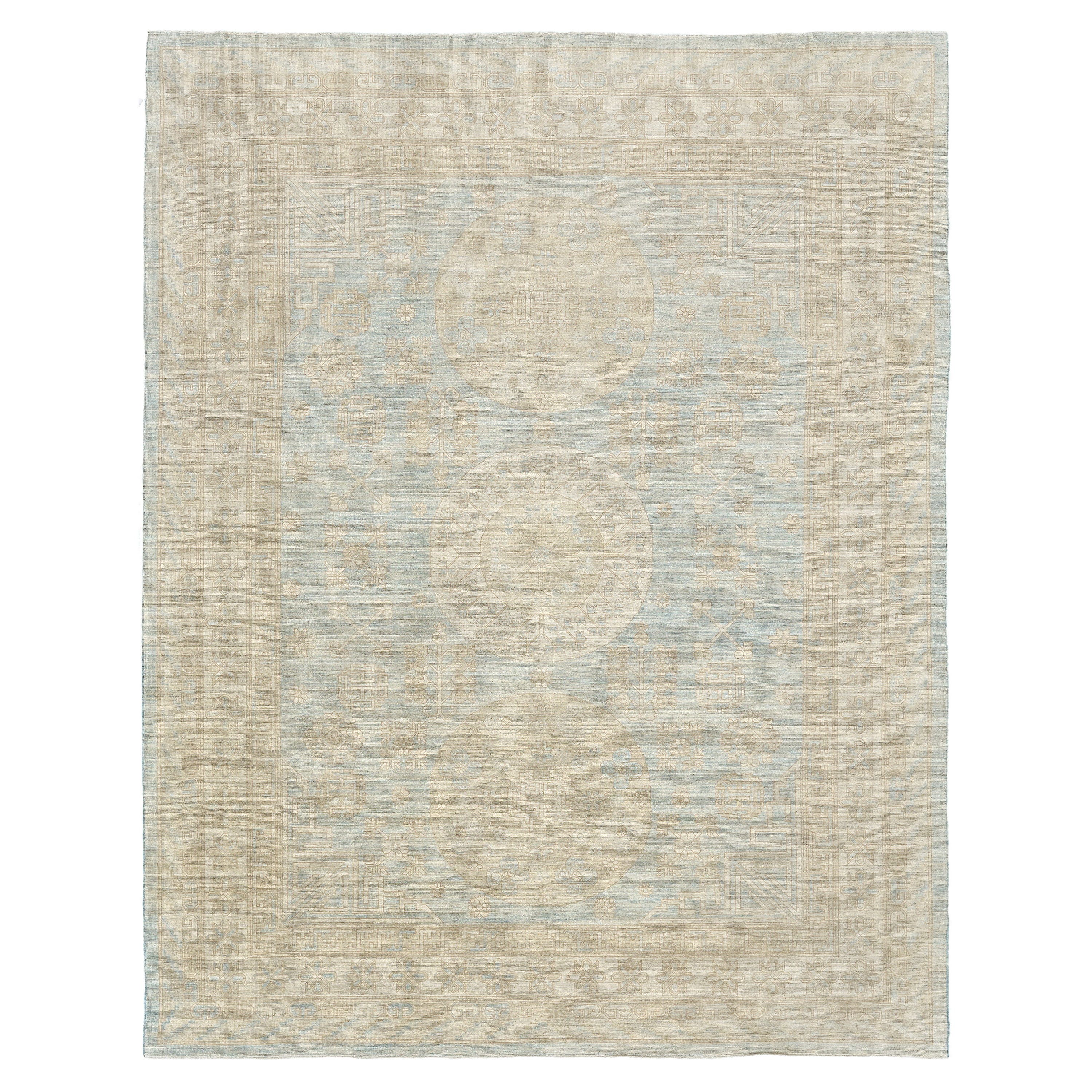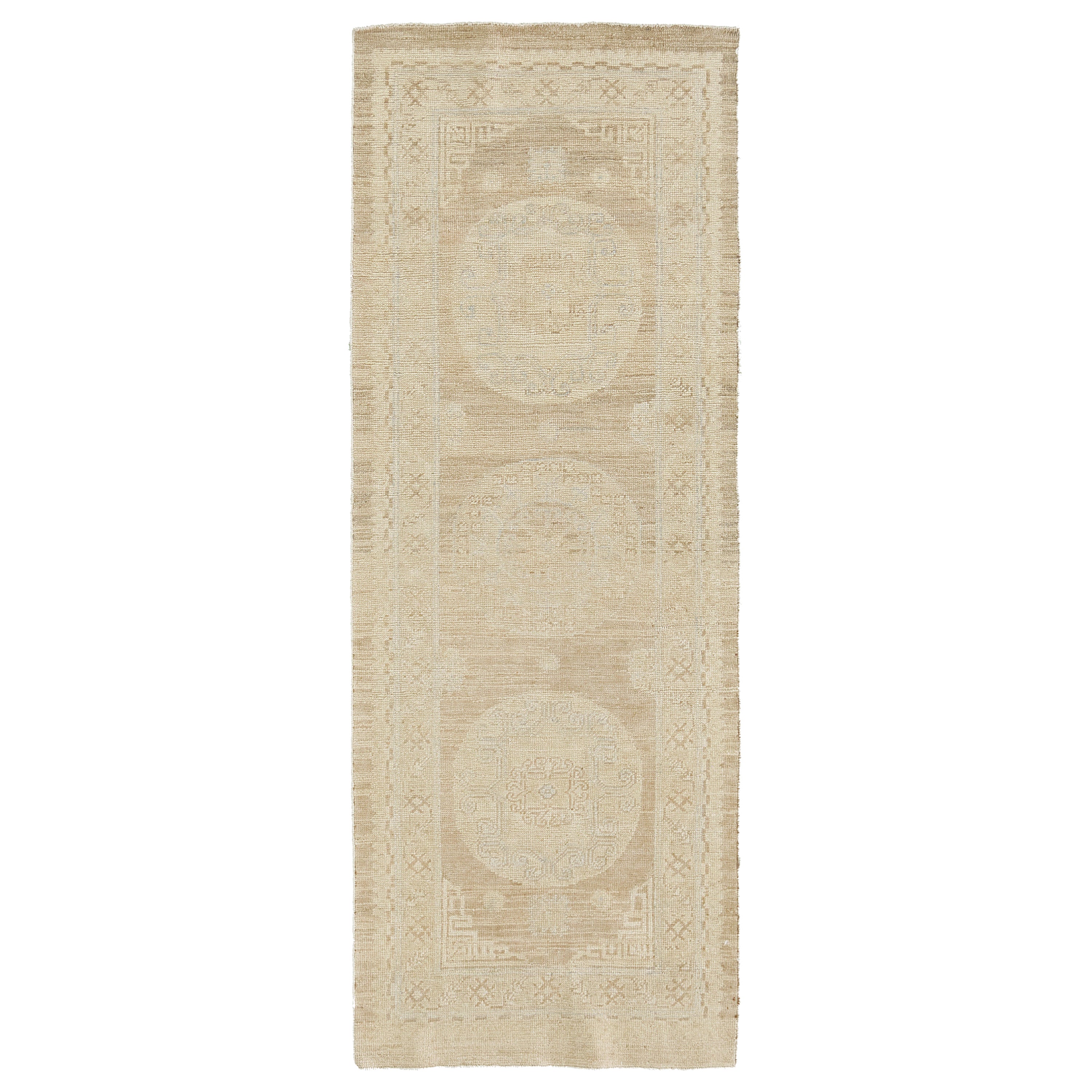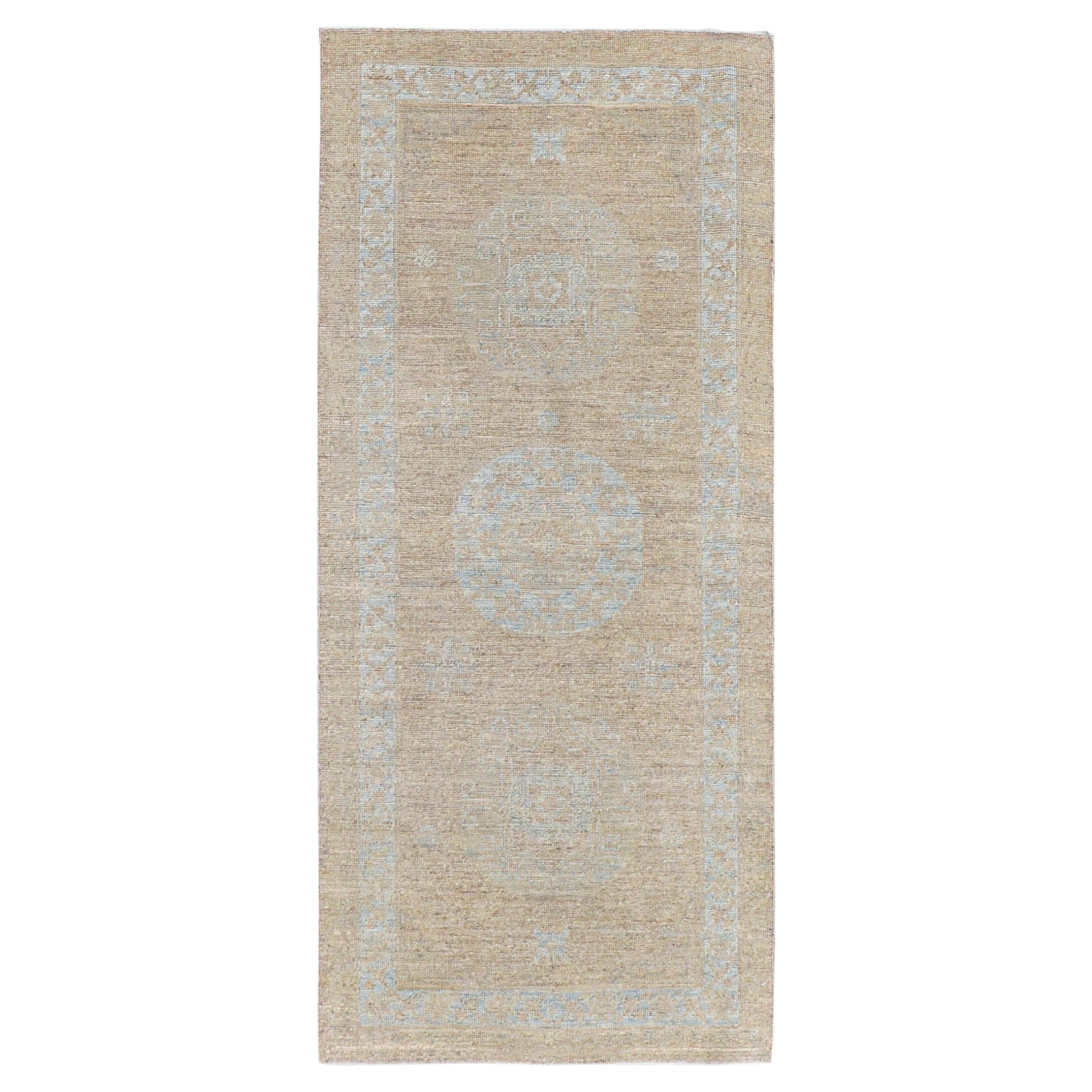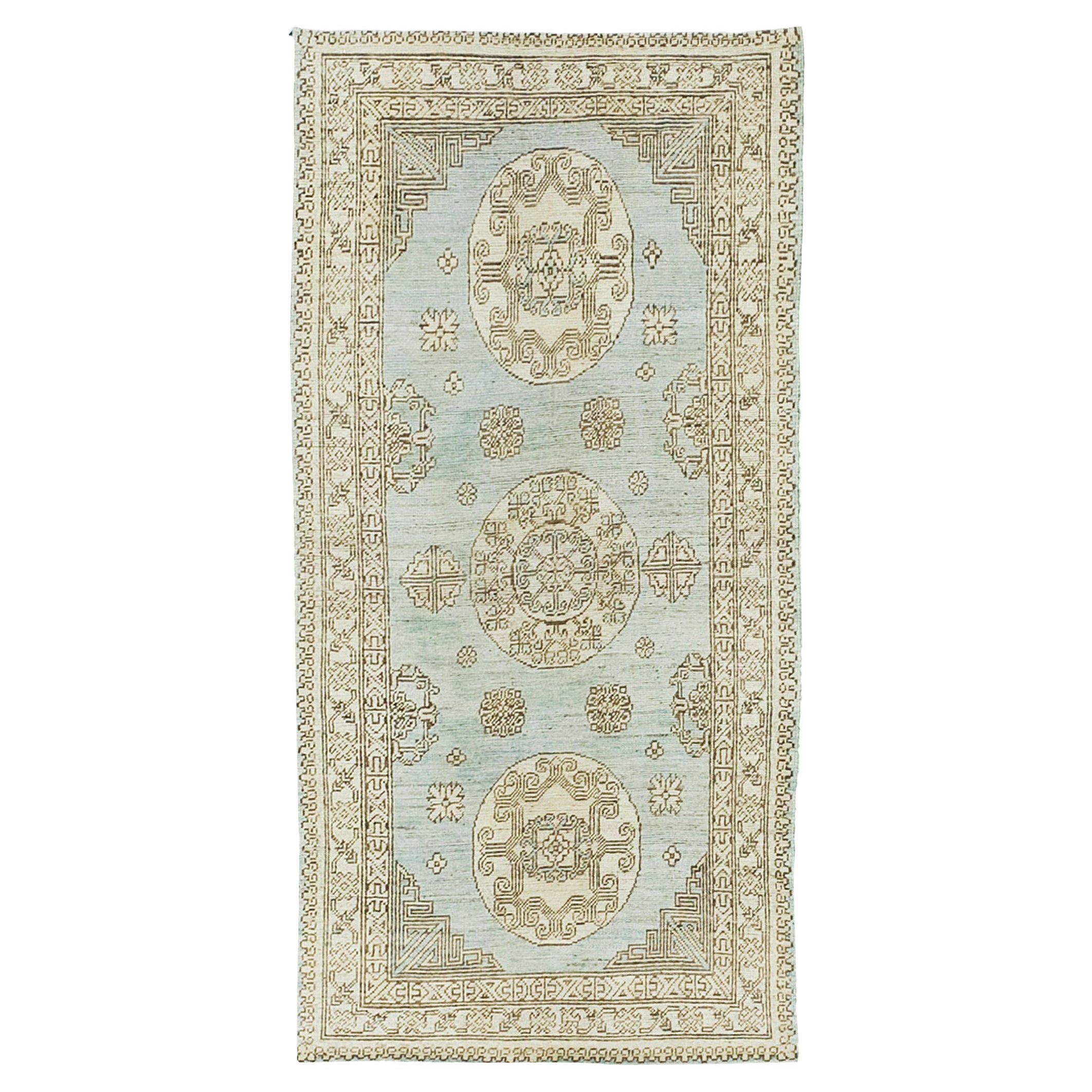Items Similar to Mehraban 18th Century Khotan Design Revival Runner
Want more images or videos?
Request additional images or videos from the seller
1 of 8
Mehraban 18th Century Khotan Design Revival Runner
About the Item
Rug Number
24824
Size
3' 0" X 11' 8"
Design
Khotan
Collection
Muted Re-Creations
Material
Wool
Texture
Pile Weave
Origin
Afghanistan
Age
New
- Creator:Mehraban Rugs (Designer)
- Dimensions:Width: 36 in (91.44 cm)Length: 140 in (355.6 cm)
- Materials and Techniques:Wool,Hand-Knotted
- Place of Origin:
- Period:
- Date of Manufacture:2023
- Production Type:New & Custom(Current Production)
- Estimated Production Time:Available Now
- Condition:
- Seller Location:WEST HOLLYWOOD, CA
- Reference Number:
About the Seller
5.0
Platinum Seller
These expertly vetted sellers are 1stDibs' most experienced sellers and are rated highest by our customers.
Established in 1945
1stDibs seller since 2019
143 sales on 1stDibs
Typical response time: 1 hour
- ShippingRetrieving quote...Ships From: WEST HOLLYWOOD, CA
- Return PolicyA return for this item may be initiated within 7 days of delivery.
More From This SellerView All
- Mehraban 18th Century Khotan Design Revival RunnerBy Mehraban RugsLocated in WEST HOLLYWOOD, CARug Number 24821 Size 4' 0" X 13' 4" Design Khotan Collection Muted Re-Creations Material Wool Texture Pile Weave Origin Afghanistan Age NewCategory
2010s Afghan Central Asian Rugs
MaterialsWool
- Mehraban 18th Century Khotan Design RevivalBy Mehraban RugsLocated in WEST HOLLYWOOD, CAA majestic revival Khotan rug that establishes a unique character by the intricately incorporated elements and unique colour combinations. The tranquil effect by the abrashed cobalt ...Category
2010s Central Asian Central Asian Rugs
MaterialsWool
- Mehraban 18th Century Khotan Design RevivalBy Mehraban RugsLocated in WEST HOLLYWOOD, CARug Number 24279 Size 9' 3" X 12' 0" Design Khotan Collection Muted Re-Creations Material Wool Texture Pile Weave Origin Afghanistan Age NewCategory
2010s Afghan Central Asian Rugs
MaterialsWool
- Mehraban 18th Century Khotan Design Revival Runner D5387By Mehraban RugsLocated in WEST HOLLYWOOD, CARug Number 20076 Size 2' 4" X 6' 2" Design D5387 Collection Muted Re-Creations Material Wool Texture Pile Weave Origin Afghanistan Age NewCategory
2010s Afghan Central Asian Rugs
MaterialsWool
- Mehraban 18th Century Khotan Design Revival Runner D5387By Mehraban RugsLocated in WEST HOLLYWOOD, CARug Number 20146 Size 2' 2" X 4' 11" Design Khotan Collection Muted Re-Creations Material Wool Texture Pile Weave Origin Afghanistan Age NewCategory
2010s Afghan Central Asian Rugs
MaterialsWool
- Mehraban 18th Century Khotan Design Revival Runner D5387By Mehraban RugsLocated in WEST HOLLYWOOD, CARug Number 20120 Size 2' 8" X 5' 11" Design D5387 Collection Muted Re-Creations Material Wool Texture Pile Weave Origin Afghanistan Age NewCategory
2010s Afghan Central Asian Rugs
MaterialsWool
You May Also Like
- Early 20th Century Khotan RunnerLocated in Chicago, ILAn early 20th century Central Asian Khotan runner with three wonderful large medallions with stylized floral clusters amidst a field of more stylized flowers against a dark violet ba...Category
Vintage 1930s Central Asian Khotan Central Asian Rugs
MaterialsWool
- New Khotan Design Afghan Runner Rug with 17th-Century Antique LookLocated in Dallas, TXNew Afghan area rug handwoven from the finest sheep’s wool. It’s colored with all-natural vegetable dyes that are safe for humans and pets. It’s a traditional Khotan design woven by ...Category
2010s Afghan Khotan Central Asian Rugs
MaterialsWool
- Antique Khotan RunnerLocated in Los Angeles, CAGiven its origins as an ancient silk road oasis, it’s no surprise that rugs from of Khotan (in northwestern China) feature an intriguing mix of Chinese, Central Asian and Western col...Category
Early 20th Century Central Asian Khotan Central Asian Rugs
MaterialsWool
- Antique Khotan RunnerLocated in New York, NYLate 19th century worn East Turkestan Khotan Runner with a pomegranate design in gray, mustard, beige and denim blue Measures: 2'6'' x 14'.Category
Antique Late 19th Century Khotan Central Asian Rugs
MaterialsWool
- Early 20th Century Handmade East Turkestan Pomegranate Khotan RunnerLocated in New York, NYAn antique East Turkestan Khotan rug in runner format with a pomegranate design handmade during the mid-20th century. Measures: 2' 2" x 7' 6" Central Asian Rugs & Carpets: Central Asia is a vast area stretching from Northeastern Persia to western China, and from northern Afghanistan to the southern edge of Russia. The carpets can be usefully divided into three groups: the nomadic Turkmen rugs of Turkmenistan, northern Afghanistan, and northeastern Persia; the non-Turkmen tribal pieces from Kazakhstan, Uzbekistan, and Kirghizstan; and the urban creations of Khotan, Yarkand, and Kashgar, oasis cities of Western China (Xinjiang Province). Commercially, the most important group is from Khotan, the easternmost of the Chinese Turkestan cities. The craft of rug weaving is primarily in the hands of Muslim Uighurs. Khotan carpets mix purely Central Asian design themes with Chinese elements. Native Khotan devices include pomegranate trees, upright flowers, round medallions, and yellow or red grounds. Chinese motives include triangular fretwork corners, swastika fretwork, and Yun-Tsao Tou (clouds and rain) diagonally striped polychrome borders. Cotton foundations, asymmetrical (Persian) knots, and medium weaves are standard. Some vintage Khotan are in horizontal, pictorial layouts with multiple various vases and plants. Saphs (multiple prayer niche panel carpets) are also a Khotan specialty. Others employ stepped and layered lozenge medallions, singly or in pairs. Still others, almost all antique, feature a stylized version of the allover Persian Herati design. Many of the oldest pieces employ brown wool wefts. Antique and vintage Khotans are almost always in the k’ang (double square) layout, conforming to the local household plans. Only relatively recently has the 6’ by 12’ or 7’ by 16’ format been replaced by the 9’ by 12’ size. As a result, an antique room size Khotan carpet is very uncommon. Reds are cinnamon, tomato and rust, never wine reds, crimson, or scarlet. Yarkand, farther west on the old Silk Road specializes in multi-medallion long carpets while Kashgar, farthest west and most under Persian influence, has traditionally knotted allover pattern pieces with finer weaves, often with silk piles, and enriched with medal thread, on cotton foundations. Extant Kashgars go back to the 17th century, but the carpet craft in Chinese Turkestan must be much older as fragments have been recovered from local tombs of the early C.E. period. Kashgars are the rarest of all East Turkestan rugs. Most available vintage East Turkestan carpets are interwar Khotans, many with pleasingly soft decorative palettes. The non-Turkmen nomads include the Kazakh, Kirghiz, Uzbek, and Karakalpak groups. Like the Turkmen, they were once all seasonally migratory, dwelling in round felt tents (yurts), but have been settled, at least partially, in the villages, and have taken up crafts and agriculture instead of sheep herding. As a result, carpet production has transitioned from domestic tent use to commercial sale, but the roots of long traditions are still evident. The Uzbeks weave...Category
Early 20th Century East Turkestani Modern Central Asian Rugs
MaterialsWool
- Early 20th Century Handmade East Turkestan Saph Khotan RunnerLocated in New York, NYAn antique East Turkestan Saph Khotan rug in runner format handmade during the early 20th century. Measures: 2' 2" x 9' 3" Central Asian Rugs & Carpets: Central Asia is a vast area stretching from Northeastern Persia to western China, and from northern Afghanistan to the southern edge of Russia. The carpets can be usefully divided into three groups: the nomadic Turkmen rugs of Turkmenistan, northern Afghanistan, and northeastern Persia; the non-Turkmen tribal pieces from Kazakhstan, Uzbekistan, and Kirghizstan; and the urban creations of Khotan, Yarkand, and Kashgar, oasis cities of Western China (Xinjiang Province). Commercially, the most important group is from Khotan, the easternmost of the Chinese Turkestan cities. The craft of rug weaving is primarily in the hands of Muslim Uighurs. Khotan carpets mix purely Central Asian design themes with Chinese elements. Native Khotan devices include pomegranate trees, upright flowers, round medallions, and yellow or red grounds. Chinese motives include triangular fretwork corners, swastika fretwork, and Yun-Tsao Tou (clouds and rain) diagonally striped polychrome borders. Cotton foundations, asymmetrical (Persian) knots, and medium weaves are standard. Some vintage Khotan are in horizontal, pictorial layouts with multiple various vases and plants. Saphs (multiple prayer niche panel carpets) are also a Khotan specialty. Others employ stepped and layered lozenge medallions, singly or in pairs. Still others, almost all antique, feature a stylized version of the allover Persian Herati design. Many of the oldest pieces employ brown wool wefts. Antique and vintage Khotans are almost always in the k’ang (double square) layout, conforming to the local household plans. Only relatively recently has the 6’ by 12’ or 7’ by 16’ format been replaced by the 9’ by 12’ size. As a result, an antique room size Khotan carpet is very uncommon. Reds are cinnamon, tomato and rust, never wine reds, crimson, or scarlet. Yarkand, farther west on the old Silk Road specializes in multi-medallion long carpets while Kashgar, farthest west and most under Persian influence, has traditionally knotted allover pattern pieces with finer weaves, often with silk piles, and enriched with medal thread, on cotton foundations. Extant Kashgars go back to the 17th century, but the carpet craft in Chinese Turkestan must be much older as fragments have been recovered from local tombs of the early C.E. period. Kashgars are the rarest of all East Turkestan rugs. Most available vintage East Turkestan carpets are interwar Khotans, many with pleasingly soft decorative palettes. The non-Turkmen nomads include the Kazakh, Kirghiz, Uzbek, and Karakalpak groups. Like the Turkmen, they were once all seasonally migratory, dwelling in round felt tents (yurts), but have been settled, at least partially, in the villages, and have taken up crafts and agriculture instead of sheep herding. As a result, carpet production has transitioned from domestic tent use to commercial sale, but the roots of long traditions are still evident. The Uzbeks weave...Category
Early 20th Century East Turkestani Folk Art Central Asian Rugs
MaterialsWool
